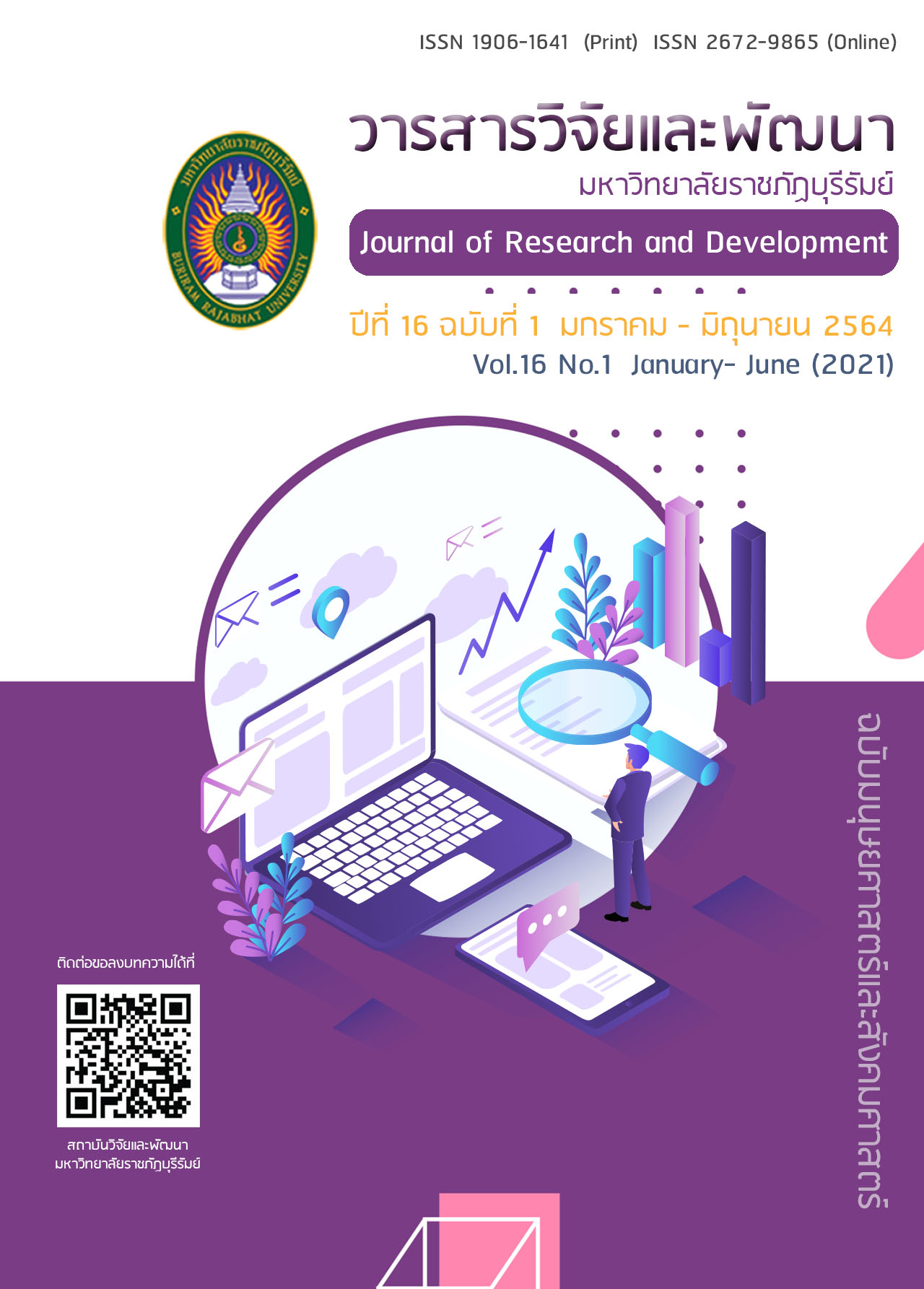การมีส่วนร่วมทางการเมืองสมัยใหม่ของเด็กและเยาวชน
Main Article Content
บทคัดย่อ
การวิจัยนี้มีวัตถุประสงค์เพื่อ ศึกษาลักษณะการมีส่วนร่วมทางการเมืองสมัยใหม่ของเด็กและเยาวชนไทย และปัจจัยที่ส่งผลต่อการมีส่วนร่วมทางการเมืองสมัยใหม่ของเด็กและเยาวชน เก็บตัวอย่างที่เป็นนักเรียนชั้นมัธยมศึกษาตอนต้นและมัธยมศึกษาตอนปลาย ในเขตภาคตะวันออกเฉียงเหนือตอนกลาง จำนวน 400 คน มาดำเนินการวิเคราะห์ค่าร้อยละ ค่าเฉลี่ย ส่วนเบี่ยงเบนมาตรฐาน วิเคราะห์องค์ประกอบ และวิเคราะห์ถดถอยพหุคูน
ผลการวิจัยพบว่า ลักษณะของการมีส่วนร่วมทางการเมืองของเด็กและเยาวชน มีอยู่ 7 ส่วน คือ (1) ด้านการเป็นสมาชิกกลุ่มทางสังคม (2) ด้านความรู้ความเข้าใจการเมือง (3) ด้านการพัฒนาทางการเมือง (4) ด้านการรับรู้ข่าวสารทางการเมือง (5) ด้านจิตสำนึกทางการเมือง (6) ด้านอุดมการณ์ทางการเมือง และ (7) ด้านความขัดแย้งทางการเมือง ซึ่งองค์ความรู้ที่ได้สามารถนำไปประยุกต์ใช้ให้เหมาะสมกับวัตถุประสงค์และเป้าหมายที่ตั้งไว้ให้สอดคล้องกับสถานการณ์ทางการเมืองในขณะนั้นให้เกิดความมีประสิทธิผลมากที่สุดในการลดความเสียหายที่เกิดขึ้น เพื่อความสมานฉันท์และเป็นประโยชน์ต่อประชาชน สังคม ประเทศชาติต่อไป และปัจจัยที่ส่งผลต่อการมีส่วนร่วมทางการเมืองสมัยใหม่ของเด็กและเยาวชน ประกอบด้วย จำนวนเวลาในแต่ละครั้ง การแบ่งปัน การแสดงความชอบผ่านการใช้ Facebook, Twitter Instagram และ Line ร่วมกับการสนับสนุนและการทำกิจกรรมการเมือง รวมถึงการติดตามข้อมูลการเมือง ทั้งนี้มีสัมประสิทธิ์พยากรณ์อยู่ในระดับสูงอย่างมีนัยสำคัญทางสถิติที่ระดับ .05 โดยมีค่า R2 เท่ากับ .53 แต่อย่างไรก็ตามการใช้ Facebook และ Twitter ให้มีประโยชน์ต่อการมีส่วนร่วมทางการเมืองนั้นมีความสัมพันธ์กับการแก้ไขปัญหาความเป็นอยู่ของประชาชนเป็นหลัก เพราะฉะนั้นการแบ่งปันความรู้ และการแสดงความเห็นใดๆ ทางการเมือง จำเป็นต้องมีความสัมพันธ์กับการมีส่วนร่วมทางการเมืองสมัยใหม่ของเด็กและเยาวชน
Article Details
เนื่อหาและข้อมูลในบทความ เป็นความรับผิดชอบของผุ้แต่ง
บทความในวารสารเป็นลิขสิทธิ์ของวารสารวิจัยและนวัตกรรมท้องถิ่น
References
สำนักงานคณะกรรมการการศึกษาแห่งชาติ. สถิติการศึกษาของประเทศไทย ปีการศึกษา 2560-2561, กรุงเทพมหานคร: บริษัทพริกหานกราฟิก จำกัด.
สำนักงานเลขาธิการสภาผู้แทนราษฎร. (2559). เยาวชนกับการมีส่วนร่วมพัฒนาประชาธิปไตย. จุลสาร. พิมพ์ครั้งที่ 1. สำนักการพิมพ์สำนักงานเลขาธิการสภาผู้แทนราษฎร.
จันจิรา สมบัติพูนศิริ. (2563). ว่าด้วยทวิตเตอร์และขบวนการไร้หัว: เหตุใดการประท้วงในโลกมีจำนวนมากขึ้นแต่ความสำเร็จน้อยลง. https://www.the101.world/.
ชญานิษฐ์ พูลยรัตน์. (2563). ยิ่งกดขี่ปราบปราม ขบวนการประชาชนก็ยิ่งเด็ดเดี่ยวและเติบโต. https://www.the101.world/paradox-of-repression/.
สมคิด พุทธศรี. (2563). Youth Manifesto: นโยบายเยาวชนใหม่เพื่อการเมืองของคนหนุ่มสาว. https://www.the101.world/youth-manifesto/.
Blais, Andr´e, and Simon Labb´e-St-Vincent. (2011). Personality Trait, Political Attitudes, and the Propensity to Vote. European Journal of Political Research. 50(3): 395-417.
Brambor, Thomas, William Clark, & Matt Golder. (2005). Understanding Interaction Models: Improving Empirical Analyses. Political Analysis. 14:1, pp. 63-82.
Carney, Dana, Jost, Gosling, and Potter. (2008).
Carroll, Susan. (2006). Voting Choices: Meet you at the Gender Gap. In Susan J. Carrolland Richanrd I. Fox, eds., Gender and Election Shaping the Future of American Politics. Cambridge: Cambridge University Press.
Granger-Frye. (2018). Social Media and Political Participation. Undergraduate Honors Theses. 1751.
Halpern, D., & Katz, J. E. (2017). We face, I tweet: how different social media influence political participation through collective and internal efficacy. Journal of
Communication, 22, 320-336.
Marina Galstyan (2019). Youth Political Participation. Literature review. commissioned by the European Union-Council of Europe youth partnership.
https://www.the101.world/youth-manifesto/
Molenberghs, G. (2010). Survey methods & Sampling techniques. Interuniversity for biostatistics and statistical Bioinformatics (I-Biostat). 31(2), 12-34.
Stephan Maria and Erica Chenoweth. (2011). Why Civil Resistance Works: The Strategic Logic of Nonviolent Conflict. New York: Columbia University Press.
Swidler. (2005). Political Efficacy and Trust: A Report on the NES Pilot Study Item. Political Behavior. 12(3): 289-314

